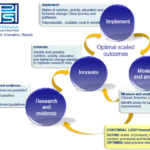Is this really mine? Practical steps managing the IP in your business
Unless you are very knowledgeable about IP law, never make the assumption that something cannot be protected.
A quick question for any business owner – how much is your business worth on the market today?
Think about the book value your accountant would give to the company, and you might be left feeling it’s worth a lot more.
Why is that?
Much of the market value of your business is due to the reputation, know-how and business methods used in your business, or in other words the ‘intellectual property’ (IP) of your business.
Whether you realise it or not, you may be the owner or user of some valuable IP. So naturally you want to manage this IP to maximise its value.
The first step towards managing your IP is understanding what you own or use. IP can exist in a number of forms, including;
- Brand names and Trade Marks: Every brand you use is potentially a trade mark. Ideally brands should be registered as trade marks, but do not have to be. If you are using brands, make a list. Record as much as you know about which brands you are using, if they are registered, who you think they belong to, and when you first think you started to use them. Search on the IP Australia website to see if these brands have already been registered as trade marks, and if so by who, and for what goods or services.
- Inventions and Processes: Has your business created new products or clever ways of doing things? New articles and patterns may be protectable with design protection, and new or recent inventions with patent protection. If a new invention is commercially valuable to you, consult a patent attorney regarding options for protection. Unless you are very knowledgeable about IP law, never make the assumption that something cannot be protected.
- Creative Works: This includes documents, websites, artistic designs including logos and artwork, databases, compilations, videos, product designs and concepts, and software. These are automatically protected by copyright, but the copyright will generally be owned the creator or their employer.
- Trade Secrets: This includes customer lists, supplier lists, standard processes etc. These documents may also be protected by copyright. Any confidentiality agreements signed by the company should also be recorded and copies stored electronically.
- Licenses to Use IP (including patent & software licenses): Any licensing agreements signed by the company should be recorded and copies stored electronically.
Why it matters?
Just understanding what IP you own or use can be a good starting point for managing it properly.
This can be important for such matters as any future sale of your business, dealing with major contracts, managing risk associated with IP litigation, and identifying any IP that you are using, but might not own.
Want to know more? The IP Australia website is useful, and many of the state and territory governments can provide advice and support. Patent or trade mark attorneys can help with specific queries.
But whatever you do, do not assume that if you leave IP alone, it will leave you alone. Many small businesses have found the opposite, to their certain regret.
By Mike Lloyd, IP Management Consultant at Griffith Hack




